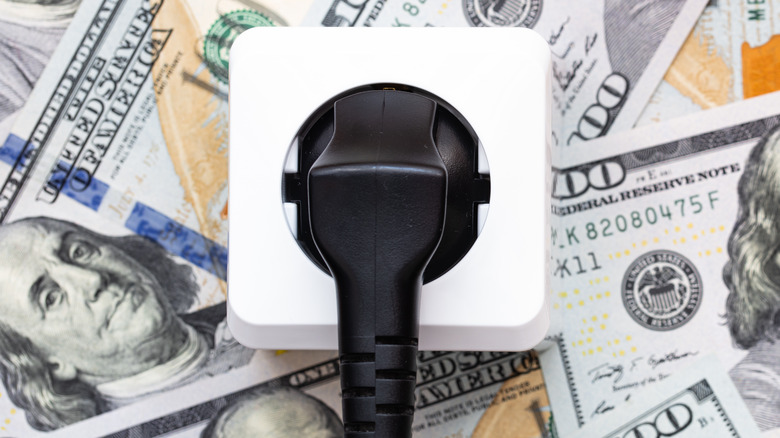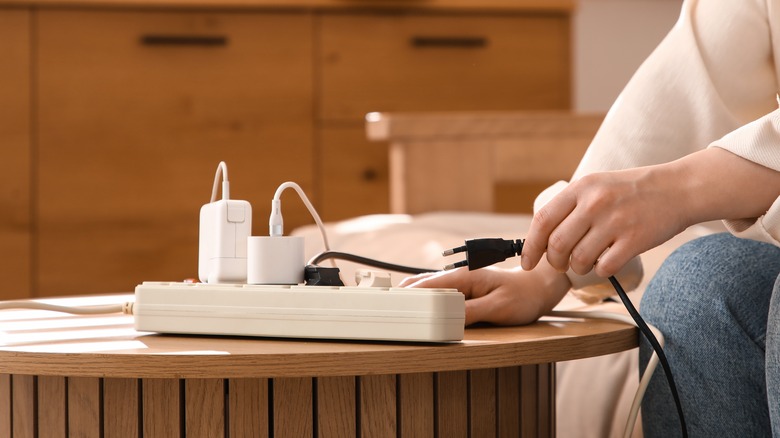Unplugging These Appliances Can Save You Over $100 On Your Electricity Bill
Rising energy bills can be literally and figuratively draining. As if having costs that fluctuate every month wasn't annoying enough, a multitude of devices in your home are likely exacerbating matters. As technology advances, so too does its need to continuously take in electricity, which can spell trouble for your energy costs. Fortunately, there is something you can do about it. Along with investing in a smart thermostat to save money on energy bills, there are other actions you can take to help reduce your monthly spending.
The National Resources Defense Council (NRDC) states that devices using standby power cost the average U.S. household around $165 a year. Standby power, or "vampire power," is when an electronic device or appliance continues to draw electricity when in standby mode or turned off. To help reduce bills, the Department of Energy (DOE) and NRDC recommend unplugging standby devices when they're not in use.
There may be more devices in your home than you think, and the number is likely only going to continue to grow. The Office of the Ohio Consumers' Council notes that the average home can have 20 to 40 devices implementing standby power, and it further states that this number is likely to climb as more appliances and electronics rely on technology. If you want to start looking for these devices around your home, there are certain tell-tale signs that a device may be drawing power even when you're not using it.
Unplug these devices to reduce your energy bills
Devices such as video game consoles, Wi-Fi routers, and coffee makers are some items you should be sure to unplug at night to save on your electric costs. Anything that has internet connectivity, an always-on display, or even just electronic controls but doesn't provide an essential function while sleeping should be unplugged when not in use. It's likely many of the devices you're potentially leaving plugged in are still taking in power, including items like modern air fryers, cordless phones, desktop PCs, and even your washer and dryer.
The items you should consider checking can also include things like charging bricks or charging docks, microwaves, or really anything that potentially continues to draw electricity when not in use. Basically, if you don't think it's shutting off entirely, unplugging it when you're not actively using it helps your energy bills. Surprisingly, most USB wall outlets are okay to keep cables connected to, depending on the situation. While the DOE and NRDC recommend turning off certain devices to save money, both note that there are essential appliances that should remain plugged in, such as your refrigerator and alarm clock.
Finally, the DOE recommends adding as many devices as you can to surge-protected power strips with physical power buttons. This way, you can completely shut off multiple devices at once without unplugging everything. The DOE also recommends Energy Star products, as they can often be more energy-efficient than their counterparts.

